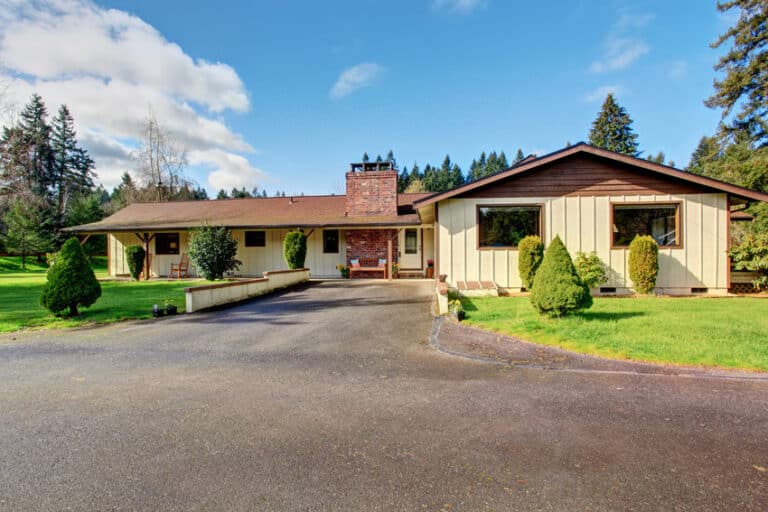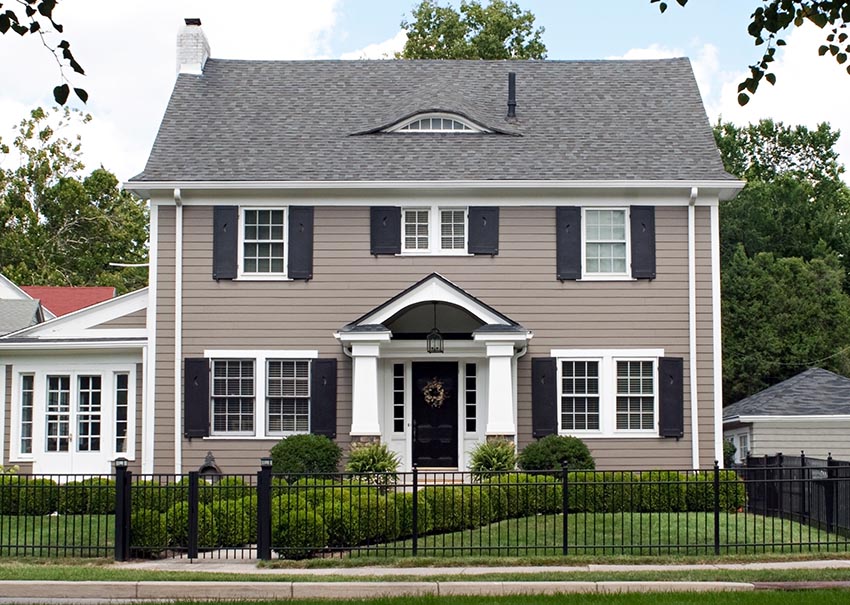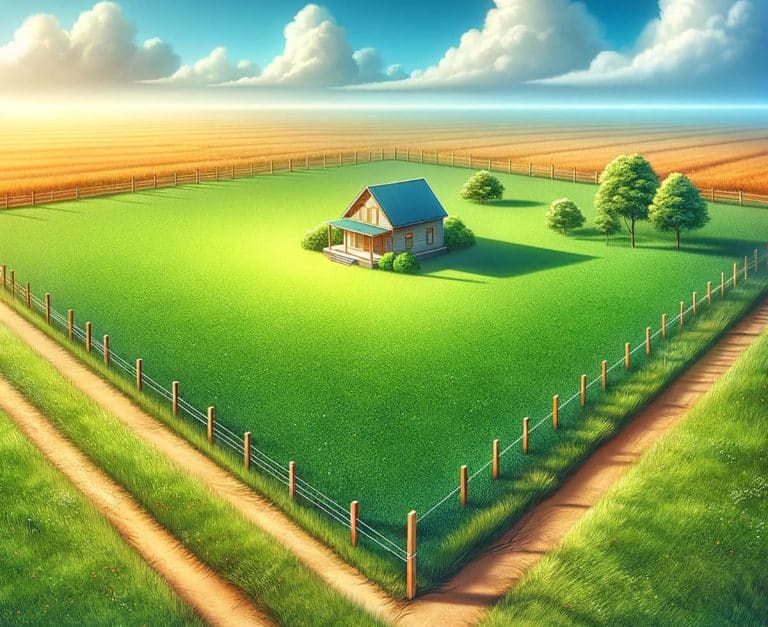Sandstone Flooring (Pros and Cons & Designs)
Here’s our sandstone flooring guide including the pros and cons, tile types, cleaning and maintenance tips, and if sandstone floors are best for your home design.
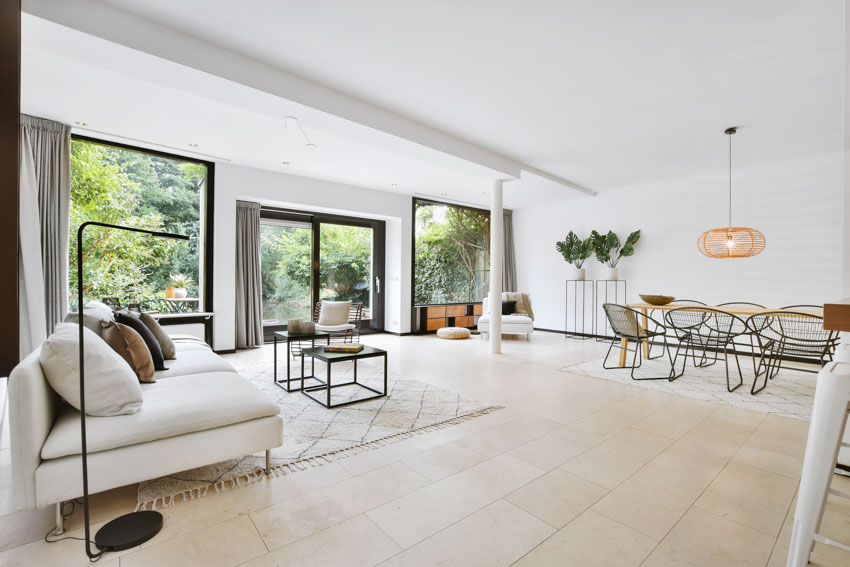
When it comes to renovating your house, one of the most common parts that get replaced is the floor tile. Homeowners have a lot of choices for their flooring materials. There’s wood, granite, and marble, and then, there’s sandstone.
What Is Sandstone Flooring?
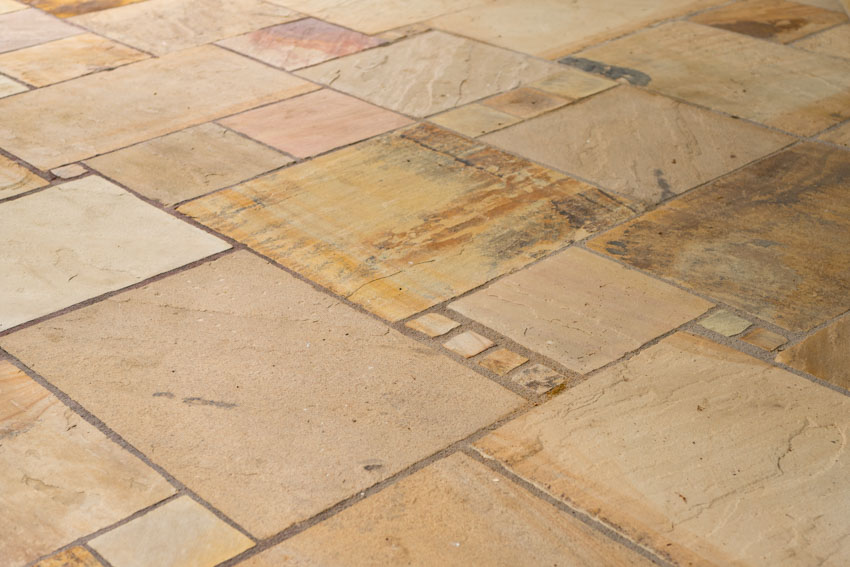
Because of its durability, it is often used in high-traffic areas like the kitchen. It is also popular as a paving material in lawns because of its porous quality.
Sandstone Flooring Pros and Cons
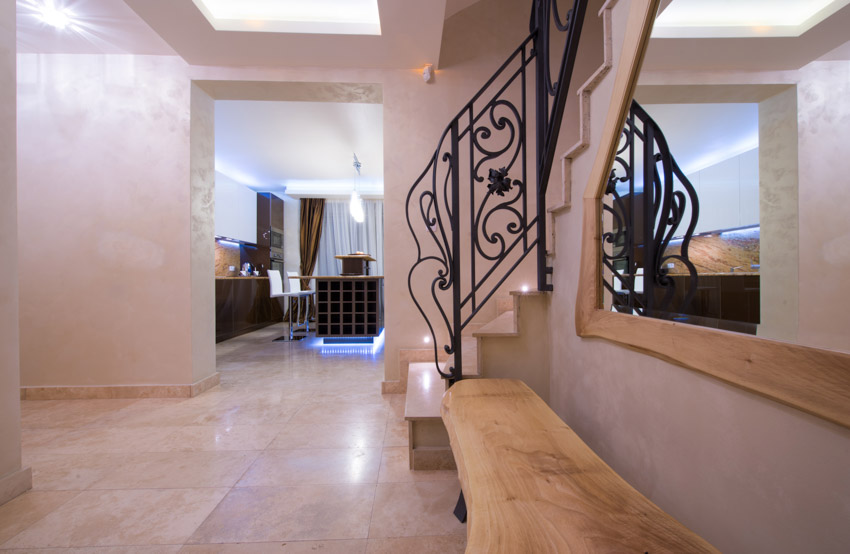
Sandstone Flooring Pros
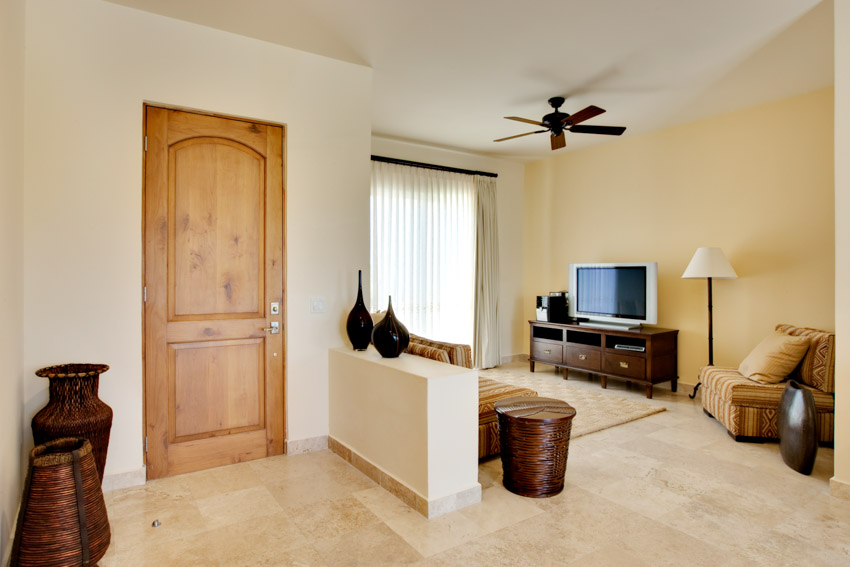
Beautiful
The natural beauty of sandstone adds character to your flooring and the whole interior design. Sandstone has a wide range of exciting hues than synthetic stone flooring materials, yet it maintains its earthy, natural feel.
Durable
Granite and slate are still kings when it comes to durability. But sandstone can hold up to its own when it comes to strength and longevity. It can withstand wear and tear for a long time, especially when properly maintained.
Unique
Since sandstone is natural, each type’s colors, hues, and patterns are individually unique. Sandstone is quarried from the mountain and cut out in giant slabs.
Then, they are processed into small pieces as tiles. In other words, each tile is a random sample of an incredible masterpiece of nature. See more tile shapes for ideas here.
Easily replaced
Since sandstone tiles are installed individually, replacing them when broken is easy. You don’t have to tear off all your flooring just to fix it. But that would probably happen after a long time since sandstone is durable.
Eco-friendly
Unlike vinyl and other synthetic flooring materials that have plastic components, sandstone is natural. Therefore, it is very environment-friendly and biodegrades over time.
Sandstone Flooring Cons

Easily absorbs water
Sandstone is a porous material, so it quickly absorbs water. Compared to other stone flooring, it has an absorption rate of around 6 percent, leaving it prone to molds and micro bacteria. Therefore, sandstone is not an ideal material for bathroom flooring.
Prone to scratch
Sandstone is a rock, but it’s a soft rock. Because of its delicate nature, it is prone to dents and scratches from chairs, high heels, and strong impacts.
Tends to be Slippery
It depends on the sandstone finish you purchased. But the more polished the surface is, the more slippery it is when wet. So be careful when there’s water on its surface because you can slip and hurt yourself.
Prone to stains
Because sandstone has a high absorption rate, liquid can easily seep through the material. If liquid stays on the floor for a long time, it can cause permanent stains.
Also, be careful of the cleaning material you use. Acidic cleaners can damage your sandstone flooring.
Weathers with age
Your newly installed sandstone floor won’t look the same after a decade, even when appropriately maintained.
Unlike marble and granite, sandstone’s softer quality cannot withstand the general wear and tear. And its exposure to natural elements will eventually take its toll, causing the sandstone tiles to discolor.
Sandstone Floor Tiles
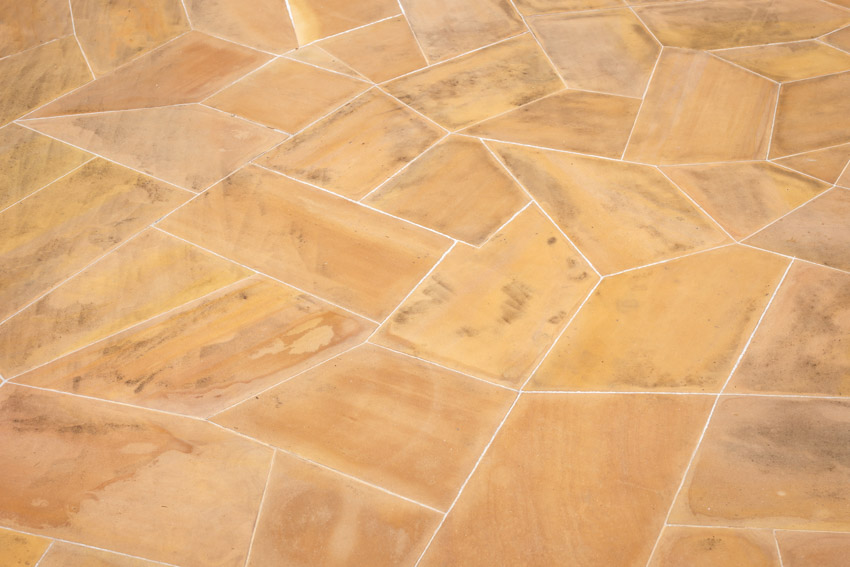
Here are different types of sandstone floor tiles:
• Black sandstone: Most of this sandstone type comes from the areas around Madhya Pradesh, India. It has a rough texture with a medium color variation.
• Autumn brown sandstone: Also known as Autumn Blend, this type has a wide range of color variations from earthy brown to plum. Its rough texture and unique patterns make it a favorite paving material.
• Modak sandstone: This type is also called Modak Rose Sandstone because of its pinkish colors and warm yellow undertones. Its rustic look makes it one of the garden and patio tile ideas that work well.
• Buff sandstone: It has a high variation of natural color tones like orange, yellow, and cream. Its warm colors and unique swirls complement any contemporary or traditional interior design.
• Camel dust sandstone: It’s the most preferred paving and landscaping sandstone type because of its natural color — creamy and yellow with dark brown hues on the surface.
• Fossil sandstone: Also referred to as Mint Fossil Sandstone because of its blend of yellow, cream, orange, and mint tones.
• Rainbow sandstone: It got its name because of its unique, colorful patterns, resembling a rainbow.
See our gallery of the tile patterns on this page.
How to Clean Sandstone Floors
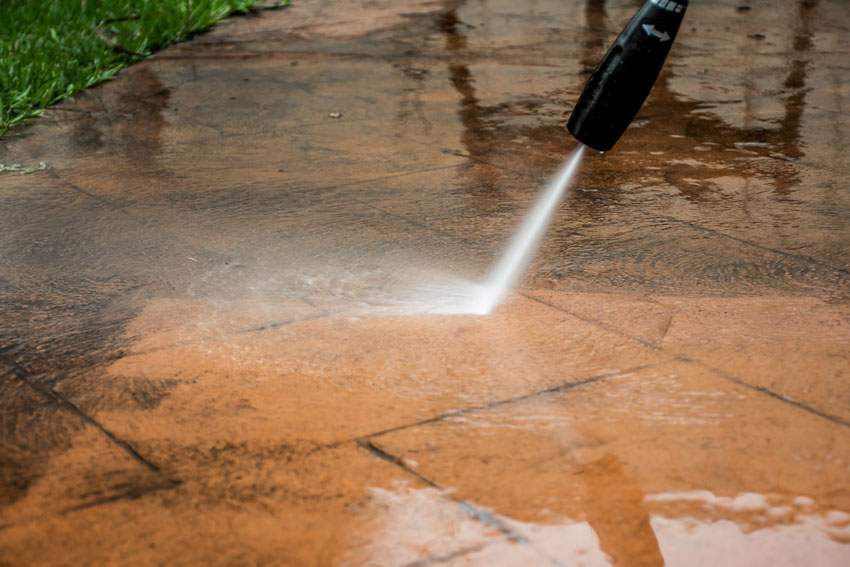
For one thing, you have to be careful when using large quantities of water. To avoid deterioration from happening, seal sandstone.
Here are some tips on how to clean your sandstone floors:
• Wipe or vacuum the floor to remove any loose dust. Don’t use water or any chemical cleaner when doing this.
• If the sandstone floor has some stain spots, use a cleanser with a neutral pH. Since sandstone is alkaline using highly acidic cleaners will damage the surface. Rinse the area with clean water and wipe it dry immediately. Never let it dry naturally.
If the grime or dirt is heavy, the floor needs a deep cleaning. Vacuum the surface first to remove all the loose dirt. Then, use a light solution cleaner and let it stand for a few minutes to loosen up the dirt.
After that, get a dry cloth to remove the solution and the grime. Follow up by swirling the surface with clean water. Wipe it immediately using a dry cloth.
Is Sandstone Slippery When Wet?

However, the type of finish you purchase for your flooring is a significant factor — the smoother the finish, the more slippery it is.
Is Sandstone Easy to Maintain?
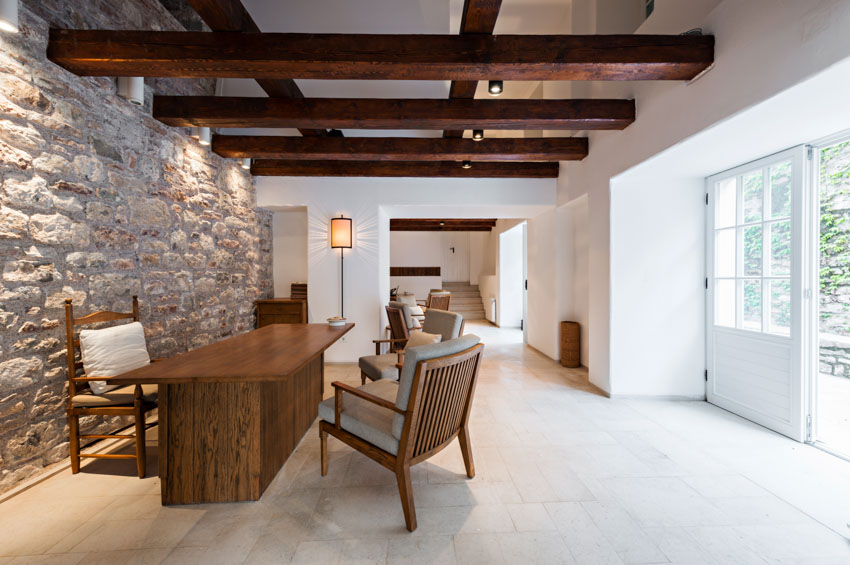
Second, don’t use highly acidic cleaners because they will damage the surface. If you want to enhance the color of your sandstone, use a solvent-based sealer. It will give the surface a “wet look.”
Does Sandstone Break Easily?
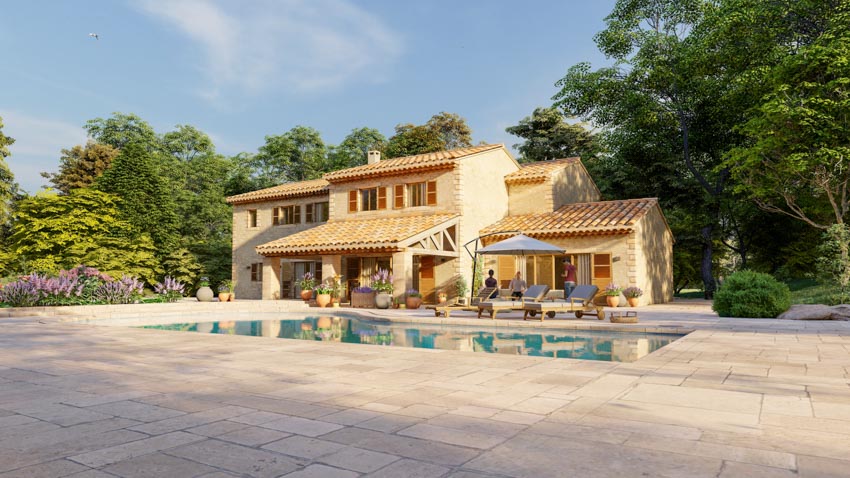
• Gray: not as hard as other sandstone types. Its edges are relatively weak, crumbling easily at even minor impact.
• Crystallized: very hard and brittle. The grains are welded together to create a polished and smooth appearance.
• Carbonate cemented: these are rare sandstones with a hard core.
• Hard sandstone: it is a cross between gray and crystallized sandstone. Like crystallized sandstone, it is hard and brittle.
Is Sandstone Good for Flooring?
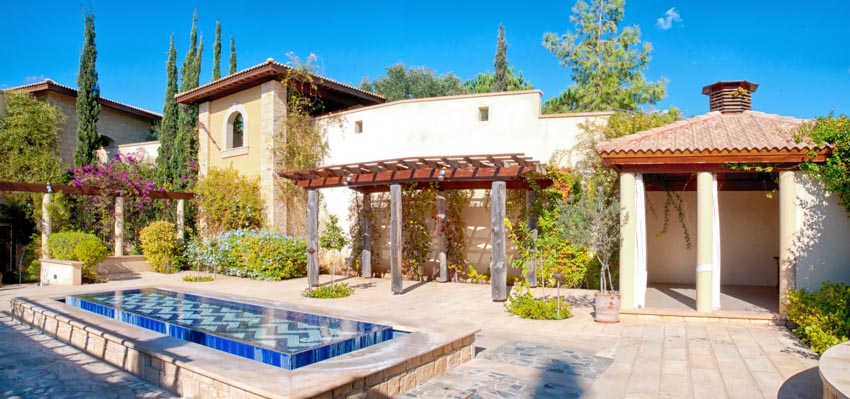
See more related content in our article about the types of flooring materials for interior design on this page.



